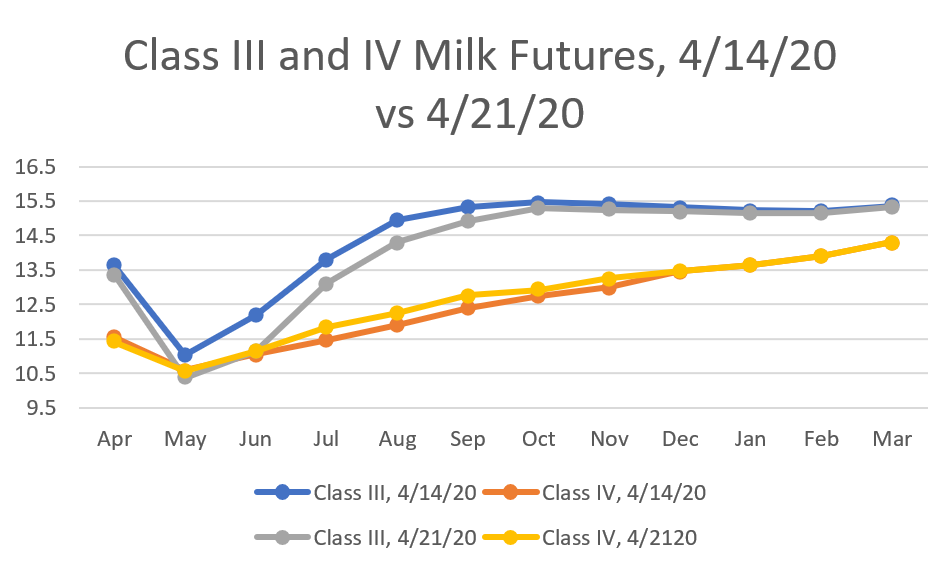COVID-19 is impacting the entire economy and marketplace, including the milk market. We’ll be providing weekly updates with milk futures prices and other market updates to help keep you as knowledgeable as possible during this time. View the entire list of weekly updates.
Class III futures continue to erode further with the average price over the next 12 months declining another 35 cent/cwt from last Tuesday. However, the average Class IV price has increased slightly to $12.63/cwt, up 13 cents from last Tuesday. Volatility and uncertainty about COVID-19 has continued to impact dairy markets negatively. In a conference call on Monday, April 20, 2020, Greg Ibach, USDA Under Secretary of Agriculture, said the economic impact to total agriculture are in excess of $40 billion.
On the same conference call, The Under Secretary gave initial details on how the $19 billion Coronavirus Food Assistance Program (CFAP) stimulus package announced by the administration and USDA late last week will be spent. $16 billion will be used as direct payments to agriculture producers. The maximum payment allowed under the program will be $125,000 per commodity or $250,000 for one entity. The other $3 billion will be used in partnership with local and regional distributors in procuring fresh produce, dairy products, and meat products. Once procured, boxes of these foods will be distributed to food banks, faith-based organizations and other non-profits that aid Americans in need. $100 million per month will be spent purchasing food from each category for a total of $300 million per month. The dairy industry’s share of the $16 billion will be $2.9 billion. Details as to how the payments for dairy will be calculated have not yet been provided. Payments are expected to be made sometime in late May.
During Monday’s conference call, Under Secretary Ibach encouraged dairy industry representatives to continue to work with the USDA to make sure the dairy industry’s needs are adequately met during the COVID-19 crisis. He also encouraged dairy farmers and other concerned citizens to contact their respective Senators and House Representatives to make sure they understand that current efforts to address the losses to the dairy sector are not adequate and further support is needed to maintain the viability of American dairy farmers.


